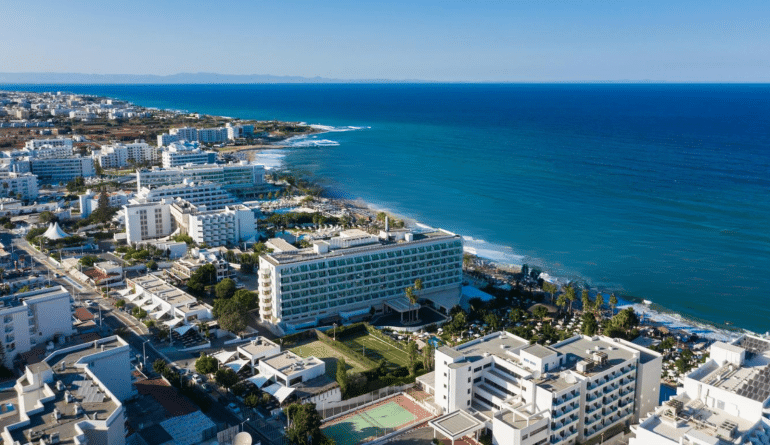It has the largest contribution to tourism revenue of all the provinces of Cyprus, but still lags behind in infrastructure development and strengthening projects. The reason for Famagusta District, which, according to the Statistical Service, has by far the greater contribution to national income from tourism. Specifically, according to the aggregated data for 2022, at Paralimni and Αγία Νάπα the total expenditure per tourist during his stay in Cyprus averaged €1,663 for 8,7 days of stay, while in Limassol, with an average stay of 11.7 days, the per capita expenditure is not even half that, reaching a total €786 and in Paphos €720 for 8,6 days.
In spite of significant contribution of the free Famagusta in the tourist industry of the country, the promoting development projects to strengthen its infrastructure it is not the analogue, resulting in growth retardation of its communities and the quality of life of its citizens and, in the long term, of the tourism product itself. As recently indicated by deputies of the Famagusta District, breathing and balanced development projects for the region remain on the shelves, degrading the region as a natural consequence.
The province is largely treated more as rural rather than touristic, even if the local economy is mainly based on services. As a result, the regional plans have significantly reduced growth rates compared to those in the cities, while overall, the plans' provisions discourage rather than encourage the development of non-agricultural sectors of the economy that would contribute to full-time employment and retention of qualified human resources in the region.
Important pending projects
As for the projects that are moving forward, there are almost always long delays. The case of its vital regeneration is typical Liopetriou River, which should have been delivered in March 2023. A year later, the work is only 55% complete, the contractor recently asked for another extension until July, but as the mayor of Liopetriou has stated, the project is not expected to be completed not even then, while the cost of its completion has been included in annual state budgets for a decade.
In the landscaping of the beach front of the Municipality of Sotiras, which includes the construction of a pedestrian walkway that will connect it Liopetriou River with the Marina of Ayia Napa, the relevant request of the Municipality of Sotiras has been considered for several years, as according to estimates, it is expected to give the necessary boost to the tourism zone of the Municipality for the region. Despite successive meetings and meetings held in this regard, the project is not expected to move forward anytime soon.
A delay is also observed in the start of the implementation of important projects that will upgrade the District as a whole, as is the necessary improvement of the road network, whose overall renewal planning is judged by experts to be necessary. The reconstruction, for example, of the road that connects the Sotira with the Derynia, started last October, with a long delay and will last at least two and a half years, while it had been announced since 2021 and was in the budgets since 2022.
In the Frenaros the redevelopment of the traditional core of the community, costing €1,2 million, is still pending despite the many announcements made for its implementation, and while it has also been included in state budgets for years. In fact, fears are even being expressed about the complete abandonment of the regeneration plans for the historic core of Frenarous. In the same denominator is the regeneration of the central square of Sotiras, with a budgeted cost € 3,4 million.
Not even a local plan
As far as the most touristic Municipalities are concerned Paralimni and Ayia Napa, where the vast majority of the population of Famagusta District resides and where the large mass of tourists, as well as the Deryneia, the publication of a local plan has been pending since 2014, with all the spatial, environmental and urban planning implications that this implies for the region, let alone for its development.
It is characteristic that the recent raising of the issue in the Parliament's Interior Committee was considered a step towards the drafting of the plan. The imminent merger of Sotiras with Ayia Napa after the local government elections creates new prospects for the coastal front west of Ayia Napa, but they also stumble on the limitations of the existing local plan. The development issues also include serious infrastructural deficiencies, which also affect vital sectors, such as water supply, due to the non-implementation of necessary water projects, which results in regular cuts, even in the midst of high summer season traffic.
Source: Kathimerini
